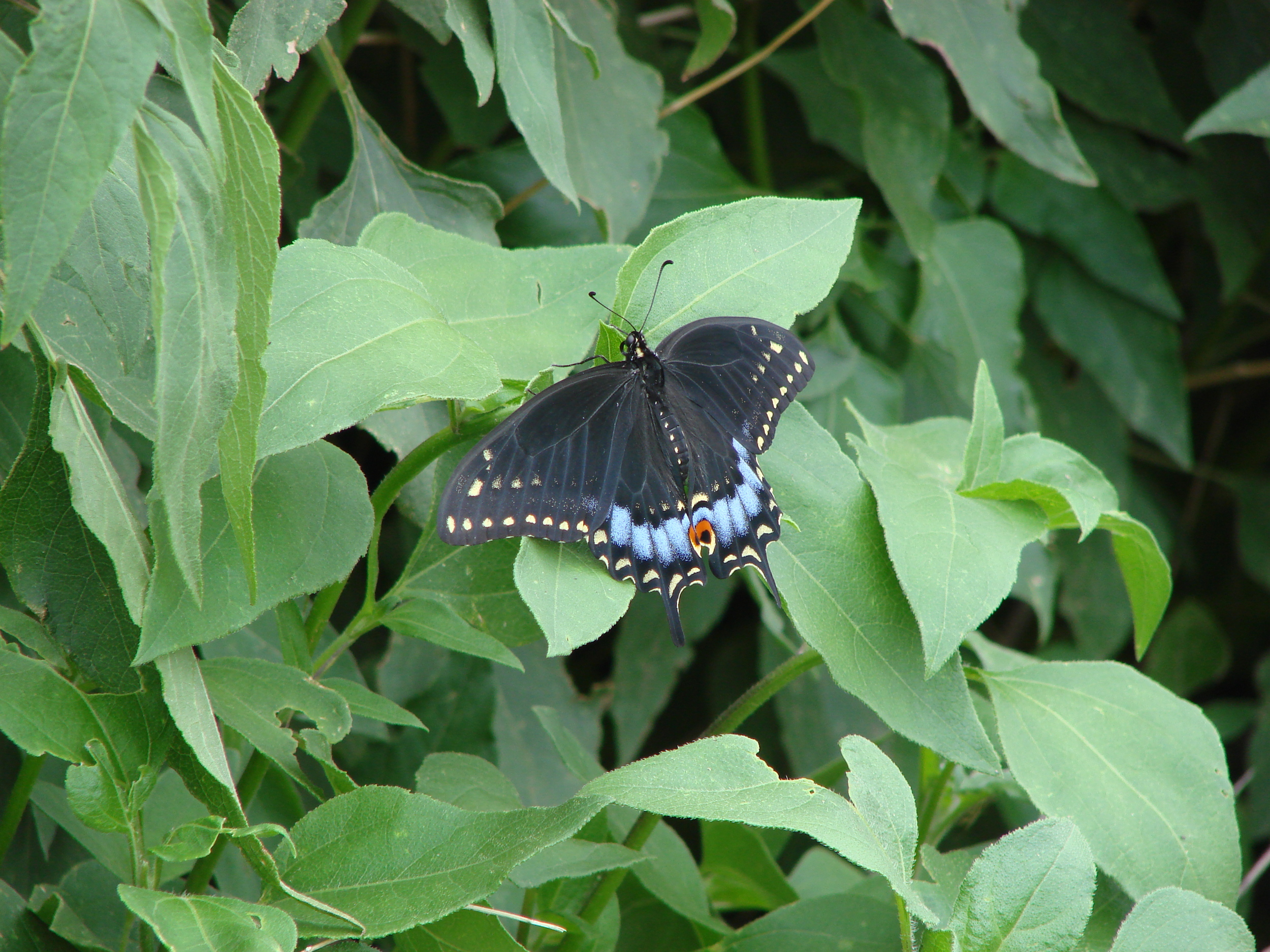Butterfly Basics: How do you tell whether a butterfly is male or female?
/This is probably the second most common question that I am asked about butterflies. Unfortunately there is not an easy answer.
Some butterflies are sexually dimorphic, meaning males and females look considerably different. Perhaps one of the better examples that we have of sexual dimorphism in Ohio is the Black Swallowtail. The males (bottom picture) of this species have a yellow band across the lower portions of the wings while in the female (top picture) the yellow band is replaced by a less extensive blue band.
Another good example of dimorphism is found in southern Ohio with the Eastern Tiger Swallowtail. In this region, the males of the species are strictly yellow in their base color. The females however can be either yellow or black in their base color. Of course, this example isn't prefect. If you see a yellow tiger (bottom picture) it can be either male or female, whereas if you see a black (top picture) tiger you know it is female.
The difference between male and female in the Monarch butterfly is much more subtle. The male monarch has a black spot on the wing vein just below the discal cell. The female lacks this black spot.
Black spot on the hindwings near the tip of the abdomen.
Telling male from female in other butterflies is much more challenging. Sometimes females are larger or will have fatter abdomens. I hate using size as an identification tool however, in that it truly is only effective if you have the two genders side by side.
Sometimes you can tell the gender of the butterfly based on the butterfly's behavior. Is the butterfly bouncing from leaf to leaf? Probably a female looking for the correct host plant. Does the butterfly appear to be patrolling the host plant patch, chasing away other butterflies? Probably a male looking for females and chasing away competing males.
Ultimately, the best way to tell male from female in butterflies is by doing some relatively rude things to them, things that you would probably not want done to yourself!
























